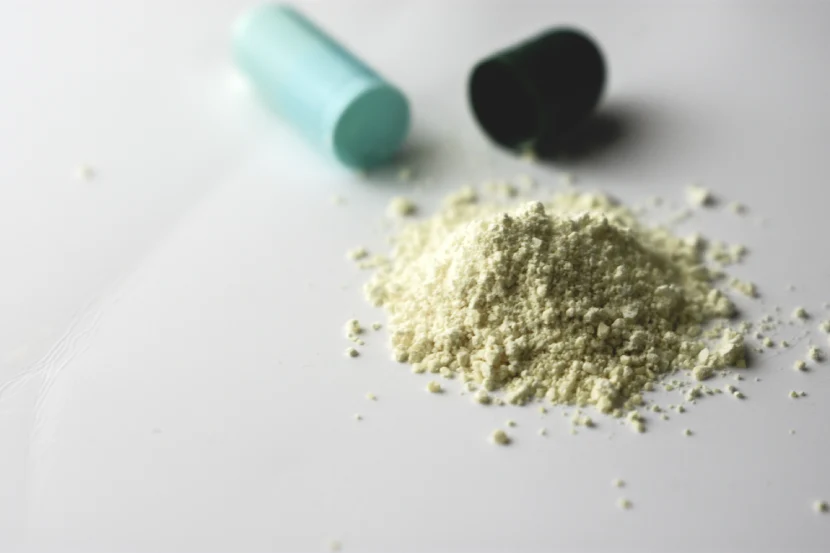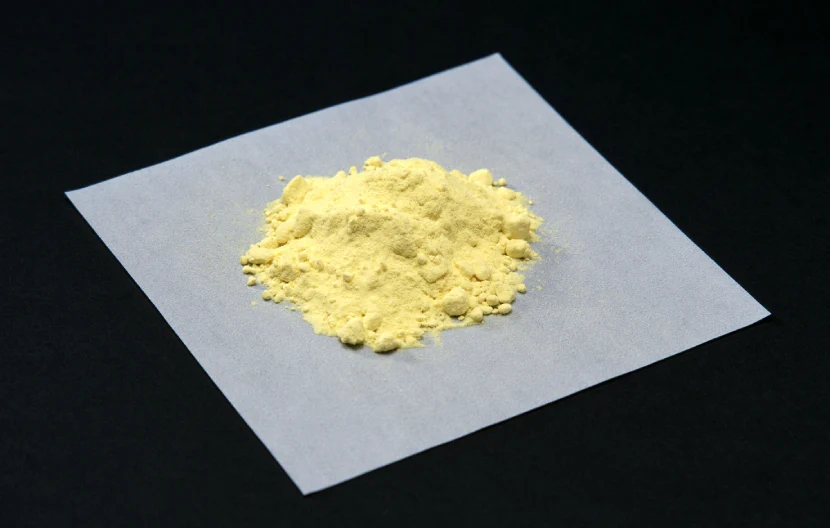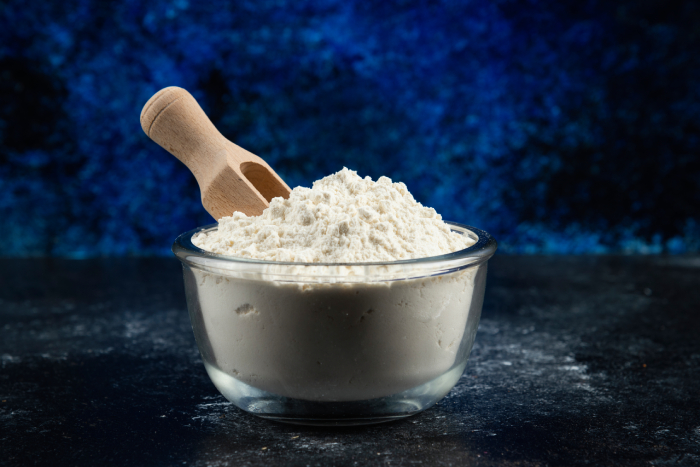In today’s health-conscious world, understanding nutritional supplements and food additives is crucial for making informed decisions about our diet and health. This comprehensive guide will explore what Ferrous Lactate is, its benefits, applications, and everything you need to know to make informed decisions about its use.
What is Ferrous Lactate and How is it Made?
Chemical Structure and Properties
Ferrous Lactate is an iron salt of lactic acid, specifically designed for iron supplementation and food fortification. The compound commonly exists as a dihydrate form in commercial products. This form is particularly stable and well-suited for various applications in both food and pharmaceutical industries.
Manufacturing Process
The production process involves a carefully controlled reaction between lactic acid and iron sources under specific conditions. Leading suppliers follow strict manufacturing protocols to ensure the final product meets all safety and purity standards. The process must be carefully monitored to maintain the desired chemical properties and prevent contamination.
Different Forms Available
As a versatile iron compound, Ferrous Lactate appears as a greenish-white to yellow crystalline powder, which is slightly soluble in water and has a mild, characteristic taste that makes it suitable for food fortification.

The Science Behind Ferrous Lactate
Absorption and Bioavailability
What makes Ferrous Lactate stand out is its excellent bioavailability. The lactate component helps facilitate iron absorption, making it an efficient choice for addressing iron deficiency. This enhanced absorption capability has made it increasingly popular in both pharmaceutical and food applications.
Comparison with Other Iron Forms
When comparing ferrous lactate vs. ferrous sulfate, several factors come into play. While both are effective iron sources, the lactate form often causes fewer gastrointestinal side effects. This makes it a preferred choice for individuals who experience digestive discomfort with other iron supplements.
Clinical Research Highlights
Scientific studies have demonstrated the effectiveness of this compound in treating iron deficiency anemia. Research shows that it maintains good stability in fortified foods while providing excellent bioavailability of iron. These properties make it particularly valuable in both therapeutic and preventive applications.
Common Applications and Uses
Food Industry Applications
In the food industry, this iron compound serves as a crucial ingredient in various fortified products. A notable application is its use in pasta products, where it provides iron enrichment without significantly affecting the product’s taste or appearance. It’s also commonly used in bread products and other fortified foods where iron supplementation is desired.
Pharmaceutical Uses
The pharmaceutical industry utilizes this iron salt in various formulations designed to treat iron deficiency. Its mild taste and good tolerability make it an excellent choice for liquid supplements and other pharmaceutical preparations.
Dietary Supplement Forms
In dietary supplements, the compound is available in various forms, including tablets, capsules, and liquid formulations. Each form is designed to meet different consumer needs and preferences while maintaining optimal iron delivery.
Understanding Ferrous Lactate in Food Products
Fortified Foods and Beverages
The food industry has embraced Ferrous Lactate as a preferred iron fortification agent due to its stability and minimal impact on product quality. Its unique properties allow it to be incorporated into various food matrices without causing unwanted color changes or metallic tastes. Common applications include fortified cereals, nutritional beverages, and dairy products, where iron enrichment is crucial for meeting dietary requirements.
Pasta and Bread Products
One significant application worth exploring is the use of Ferrous Lactate in pasta products. The compound’s stability during the pasta-making process and cooking makes it an ideal choice for fortification. Similarly, bread manufacturers have found success incorporating this iron source into their products, as it doesn’t interfere with the baking process or final product quality.
Regulatory Standards and Guidelines
Global food safety authorities have established specific guidelines for the use of this iron compound in food products. These regulations ensure proper usage levels and maintain safety standards across different food categories.
Dietary Considerations and Restrictions
Vegan and Vegetarian Status
A common question among consumers is “Is Ferrous Lactate vegan?” Despite its name containing “lactate,” this compound isn’t necessarily derived from dairy sources. Many manufacturers produce vegan-friendly versions using plant-based or synthetic production methods. However, consumers following strict vegan diets should verify the source with specific suppliers or manufacturers.
Dairy Content Analysis
Another frequent concern is whether Ferrous Lactate contains dairy. While the lactate component can be derived from various sources, including dairy fermentation, most commercial products are dairy-free. However, individuals with dairy allergies should still exercise caution and verify the product’s source, as production methods can vary among manufacturers.
Allergen Information
For those with dairy or milk allergies, it’s crucial to understand that Ferrous Lactate itself doesn’t typically trigger dairy-related allergic reactions. However, consumers with severe dairy allergies should still carefully check product labels and consult with manufacturers about potential cross-contamination during production.
Health Benefits and Advantages
Iron Deficiency Treatment
The primary health benefit of this iron compound lies in its effectiveness in treating iron deficiency. Its high bioavailability and gentle nature on the digestive system make it particularly valuable for individuals requiring iron supplementation.
Pregnancy and Women’s Health
Pregnant women and those of childbearing age often require additional iron intake. The compound’s good absorption rate and tolerability make it a suitable option for meeting increased iron demands during pregnancy and lactation. Healthcare providers often recommend this form of iron due to its reduced likelihood of causing digestive discomfort, a common concern during pregnancy.
Athletic Performance Support
Athletes and physically active individuals may benefit from iron supplementation to maintain optimal performance. The compound’s ability to effectively replenish iron stores, combined with its good digestibility, makes it a practical choice for supporting athletic performance and recovery.
Potential Side Effects and Precautions
Common Side Effects
When discussing Ferrous Lactate side effects, it’s important to note that while this form of iron is generally well-tolerated, some individuals may experience mild digestive issues. These can include nausea, mild stomach discomfort, or constipation. However, these effects are typically less severe compared to other iron supplements, particularly when taken with food.
Risk Groups
Certain populations need to exercise additional caution when using iron supplements. People with hemochromatosis or other iron absorption disorders should consult healthcare providers before using any iron supplements. Additionally, individuals with specific medical conditions or those taking certain medications should seek professional advice to avoid potential interactions.
Contraindications
Healthcare professionals recommend avoiding high-dose iron supplementation without proper diagnosis. It’s essential to maintain appropriate dosage levels and avoid combining different iron supplements without medical supervision.
Dosage and Administration
Recommended Daily Intake
The appropriate dosage of Ferrous Lactate varies depending on individual needs and the specific condition being treated. Standard supplementation typically ranges from 30 to 120 mg of elemental iron daily, divided into multiple doses. However, these amounts should be personalized based on medical advice and individual iron status.
Best Time to Take
For optimal absorption, iron supplements are often recommended on an empty stomach. However, Ferrous Lactate can be taken with food if digestive discomfort occurs. Spacing iron supplementation away from certain medications and supplements can help maximize its effectiveness.
Absorption Enhancement Tips
Several factors can influence iron absorption. Vitamin C consumption can enhance absorption, while certain foods and beverages, such as tea, coffee, or calcium-rich products, may inhibit it. Understanding these interactions helps optimize supplement effectiveness.
Market Analysis and Industry Trends
Global Supplier Landscape
The market for Ferrous Lactate continues to expand, with multiple qualified suppliers operating worldwide. When selecting a supplier, factors such as manufacturing standards, quality certifications, and production capacity play crucial roles in ensuring product quality and reliability.
Quality Standards
Leading manufacturers adhere to strict quality control measures throughout the production process. This includes regular testing for purity, stability, and contamination. Third-party certifications and compliance with international standards provide additional assurance of product quality.
Market Growth Projections
Market analysis indicates growing demand for iron fortification in food products and supplements. This growth is driven by increasing awareness of iron deficiency, rising health consciousness, and expanding food fortification programs in developing regions.

Choosing the Right Product
Quality Indicators
When selecting products containing this iron compound, several quality indicators deserve attention. These include proper labeling, clear sourcing information, and manufacturing certifications. Reputable manufacturers provide detailed product specifications and are transparent about their production processes.
Price Considerations
While cost shouldn’t be the sole determining factor, understanding price variations can help make informed decisions. Factors affecting price include manufacturing quality, purity levels, and bulk quantity purchases. However, investing in high-quality products from reliable sources typically provides better value in the long term.
Product Forms Comparison
Different formulations suit various needs. While some may prefer traditional tablets, others might find liquid forms more suitable. Understanding the advantages and limitations of each form helps in selecting the most appropriate product for individual requirements.
Safety and Storage Guidelines
Proper Storage Conditions
Proper storage is crucial for maintaining the effectiveness of Ferrous Lactate products. Store supplements in a cool, dry place away from direct sunlight and excessive heat. Most products maintain stability at room temperature, but always check specific storage instructions on the label.
Shelf Life Information
The shelf life varies depending on the product formulation and packaging. Generally, properly stored supplements remain stable for 2-3 years from the manufacturing date. Always check expiration dates and avoid using products showing signs of degradation or damage.
Quality Maintenance Tips
To maintain product quality, keep containers tightly sealed when not in use. Exposure to moisture or air can affect stability and potency. If you notice any changes in color, texture, or smell, it’s best to replace the product.
Frequently Asked Questions (FAQs)
General Questions
Q: What is Ferrous Lactate primarily used for?
A: This iron compound serves as both a dietary supplement and food fortificant, primarily used to prevent or treat iron deficiency.
Q: Can it be taken with other supplements?
A: While Ferrous Lactate can be combined with many supplements, it’s best to space iron intake away from calcium supplements and certain medications.
Q: How does it compare to other iron forms?
A: When considering ferrous lactate vs. ferrous sulfate, many users report better tolerance and fewer digestive issues with the lactate form.
Safety Concerns
Q: Is Ferrous Lactate dairy-free?
A: Most commercial products are dairy-free, though individuals with dairy allergies should verify the manufacturing source.
Q: What are the common side effects?
A: While generally well-tolerated, some people may experience mild digestive discomfort, which can often be minimized by taking the supplement with food.
Usage Guidelines
Q: What’s the best way to take iron supplements?
A: For optimal absorption, take on an empty stomach if possible. However, if digestive discomfort occurs, taking it with food is acceptable.
Q: How long should I take iron supplements?
A: The duration of supplementation should be determined by healthcare providers based on individual iron status and needs.
Conclusion
After thoroughly examining Ferrous Lactate’s properties, benefits, and applications, it’s clear why this compound has gained prominence in both the nutrition and food industries. Its combination of good bioavailability, stability, and relatively mild side effect profile makes it a valuable option for addressing iron deficiency and food fortification needs.
Key takeaways include:
- Its versatility in both supplement and food fortification applications
- Generally good tolerability compared to other iron forms
- Important considerations for various dietary restrictions
- The significance of proper storage and handling
- The importance of professional guidance for supplementation
While this iron compound offers numerous advantages, remember that individual needs vary. Always consult healthcare providers before starting any supplementation regimen, and choose products from reputable manufacturers to ensure quality and safety.
For those considering iron supplementation or looking to understand food fortification better, staying informed about options like Ferrous Lactate helps make better health-related decisions. Whether you’re a healthcare provider, food manufacturer, or consumer, understanding these aspects contributes to more informed choices in nutrition and supplementation.



